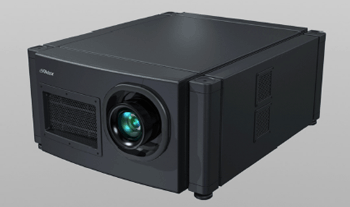Versus all previous phones, my first generation iPhone was like a supermodel. Now, with the update to 2.0 version of iPhone software, which offers many, but not all, of the benefits of the 3G model, the downsides to dating a supermodel have taken center stage: the petulance, the tantrums, the inability to get ready on time (speaking metaphorically, of course, as my experience with supermodels has been limited).
No one should review a tech product without using it for some period of time, and having used my first generation iPhone with the 2.0 software for a few weeks now, I'm not so sure that the benefits have outweighed the setbacks, a tough thing for an early adopter to admit. I have a high tolerance for the frustration of life on the cutting edge, but in this case it feels like two steps forward, two steps back.
I've experienced many of the problems reported by other 1st-gen and 3G owners after having updated to the 2.0 software. Most noticeable and galling is interface lag. In a touchscreen device, this is deadly, because you tap again and again in frustration, thinking the device is frozen, and then you hit the home button, but when the device finally catches up it issues all your commands in sequence and bounces you out of the application you were in because you hit the home button.
Many more random crashes? Yep, those too.
Over at Signal vs. Noise, David lists a lot of the gremlins that are plaguing the 3G. I wonder if some if this isn't related to memory leak in some of the new applications. What's ironic is that when I jailbroke my iPhone previously and installed some unapproved apps the iPhone still seemed snappy and responsive. Not that I've installed "officially approved" applications built with the iPhone SDK, the phone seems sluggish and unstable.
Another things that bugs me: when any of the apps update, they get bumped to the last page of your home screen, rather than staying in the same place. Imagine if every time one of your Mac applications was updated, it shifted in your dock to the far right. I don't think I'm unique in relying heavily on spatial memory, so this is a bad thing.
Though I had fun installing and trying a ton of applications when the store first opened, none have altered my life. Some, like Facebook or Google, are ones that don't offer much more than what their mobile Safari interfaces do. Others are useful, like Pandora, or fun, like Enigmo, but they are vampires on battery life.
iLounge has a good, comprehensive review of the new iPhone 3G, and they give it a B. Their summary of its pros and cons:
Pros: A faster and more capable version of last year’s breakthrough mobile phone, preserving the world’s best cell phone operating system, a strong combination of voice and data communication features, and iPod-class audio, video, and photo functionality, while adding impressive third-party software expandability and features for business users. Offers enhanced compatibility with international telephone networks, including high-speed towers, as well as keyboard and language support for users in most of the world’s countries. Now includes GPS for limited purposes, and superior sound quality, particularly through its redesigned headphone port.
Cons: Overall cost of ownership is higher than prior model, despite regressing from last year’s stunning design, screen quality, and pack-ins. Battery life for key phone and data features is significantly worse than before, such that users will likely require inconvenient mid-day recharging. Service contracts require additional payment for 3G data services, despite inconsistent or unavailable regional coverage and performance; callers reported certain in-call sound inconsistencies. New model further decreases compatibility with past iPod accessories, including popular ones, while both camera and screen now have noticeable color tints. Defects and battery replacement will likely require Apple Store or other warranty attention during period of use; purchasing and activation can range from simple to confusing or nightmarish depending on your local service provider.
One benefit of the apps is that U.S. users can send free SMS Messages via the AIM app. It's a bit of a hassle, you have to text to a person's phone number, and years of carrying a cell phone means I don't recognize as many phone numbers as I once did, but paying $5 to send 200 text messages is one of those great telecom scams that so endear them to users.
The one positive to come out of this, if there is one, is that I'm glad I didn't wait out in line for a 3G. Supposedly the iPhone 2.1 software update is around the corner, and hopefully that solves some or many of these issues. If not, perhaps it's not the 3G but the real 3rd generation iPhone that I need to wait for.





